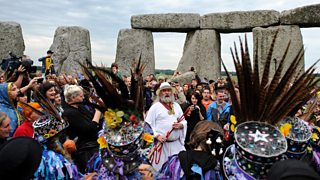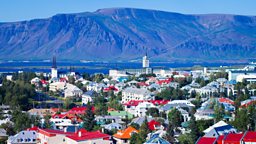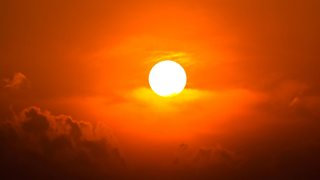Everything you need to know about the summer solstice
Summer has finally arrived - astronomically speaking.
The summer solstice, otherwise known as the longest day, marks the start of astronomical summer as long as you live in the northern hemisphere. Cross the equator and the situation is reversed as they have their shortest day.
So what exactly is the summer solstice and who celebrates it?

When is the summer solstice?
For northern hemisphere dwellers, the 2024 summer solstice occurs on Thursday 20 June at 21:51 BST (20:51 GMT).

This is the moment at which the sun will be at its highest position in the sky, giving the longest period of daylight.
In the southern hemisphere, the opposite will be true, with the sun sinking to its lowest altitude, giving the shortest period of daylight.
But the exact moment of the summer solstice varies from year to year due to a slight misalignment between the Gregorian calendar and the actual rate of the Earth’s rotation around the sun.
What does βsolsticeβ mean?
The term 'solstice' derives from the Latin word 'solstitium', meaning 'sun standing still'.
Some prefer the more teutonic term 'sunturn' to describe the event. That’s because astrologers say the sun seems to 'stand still' at the point on the horizon where it appears to rise and set, before moving off in the reverse direction.
Does the solstice have other names?
Some pagans call the day Litha, (LEE-tha), which originates from an old Anglo-Saxon word for the month of June.
For pagans, Litha represents a fight between light and dark, and between the ruler from the winter to summer solstice – the Oak King – and the ruler from summer to winter – the Holly King.
Traditionally, pagans reflect on the battle between light and dark within themselves at this time.
-
![]()
In Our Time: The Druids
Melvyn Bragg and his guests discuss the Druids, the mysterious priests of ancient Britain, Gaul and Ireland.

Who celebrates the summer solstice?
Anyone who fancies it but traditionally the event was one of eight annual Sabbats, or holidays for Celts - and today’s Celtic pagans - that follow the seasonal calendar. (The others are the Winter Solstice, Imbolc [beginning of spring], Vernal Equinox, Beltane [May Day festival], Summer Solstice [Litha], Lughnasadh [beginning of harvest], Autumnal Equinox, and Samhain.)
-
![]()
In Our Time: Fairies
Melvyn Bragg discusses the literary and visual depiction of fairies.
Traditionally, farmers would ask the goddesses and gods to bless their cattle and crops.
Pagans believe that the solstice marks the moment when the Fae folk (fairies, elves and sprites) come out and play among the humans.
At Litha, the Horned God and Mother Nature are at their peak of their powers.
Pagans believe that the solstice marks the moment when the Fae folk (fairies, elves and sprites) come out and play among the humans.
How else do people celebrate?
Festivities often traditionally revolve around lighting bonfires, especially in Scandinavian countries, where effigies of witches are also burnt.
The flames were thought to keep the dark away with the onset of shorter days.
Other midsummer celebrations in the UK involve Maypole dancing, watching the sun rise, and singing.
Britain and the sun: a rare treat or a sweaty pain?

How do we feel about the fleeting visits of hot days?
Where do people traditionally celebrate the solstice in the UK?
At dawn on the solstice at the ancient Stonehenge monument near Salisbury, Wiltshire, the rising sun reaches the middle of the stones when shining on the central altar.

In Penzance, Cornwall, the has traditionally celebrated midsummer - ‘golowan’ being midsummer in Cornish - with live music and entertainment.
Watching the sunrise from Parliament Hill is popular in London.
So does Midsummer day also fall on the summer solstice?
Confusingly, no. Midsummer day is marked around the time of the solstice but it is not the same thing.
European celebrations of Midsummer take place between 21 and 24 June, depending on regional traditions. In the UK Midsummer day occurs on 24 June, the feast of St John the Baptist.
Which country enjoys the longest day?
Residents of Reykjavik, Iceland, get 21 hours and 45 minutes of sunlight on 21 June.

More from Radio 4
-
![]()
In Our Time: The Druids
Melvyn Bragg and his guests discuss the Druids, the mysterious priests of ancient Britain, Gaul and Ireland.
-
![]()
Beyond Belief: Stonehenge
Ernie Rea and guests discuss the spiritual importance of Stonehenge.
-
![]()
In Our Time: The Sun
Melvyn Bragg and his guests discuss the science of the sun, source of all our energy.
-
![]()
Nine Surprising Ways to Celebrate the Summer Solstice
Where can you go and what can you do to celebrate the solstice.




